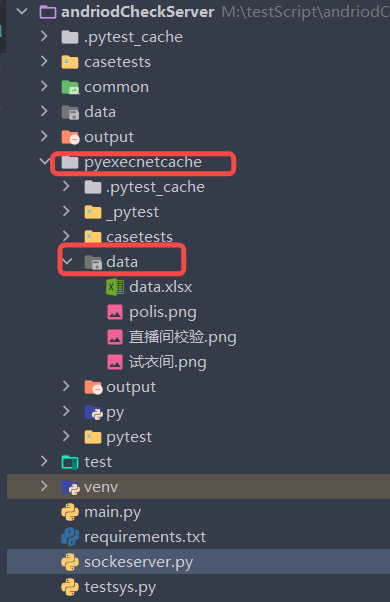win系统airtest+pytest-xdist服务器分布式运行。
2024-10-21 13:13:36
1.准备至少两台服务器,集群全部是局域网,(启动脚本的时候可以使用外网ip)。
2.输出的报告地址,需要把文件夹设置成共享文件夹,(连接的时候使用内外ip)。
启动脚本文件
import os, datetime, sys# sys包启动py文件的时候可以给文件入参运行
HOST1 = "服务器1"
HOST2 = "服务器2"
MASTER_HOST = r"\\127.0.0.1"#主服务器,需要换成内外ip,不建议使用127.0.0.1
MASTER_HOST_report_PATH=fr"{MASTER_HOST}\output\report"
date = datetime.datetime.now().strftime("%Y_%m_%d")
dates = datetime.datetime.now().strftime("%Y_%m_%d_%H_%M_%S")
BASE_PATH = os.path.dirname(__file__)
filename = dates
param = sys.argv[1]
if param == "polis" or param == "loudliveroom" or param == "fittingroom":
os.mkdir(fr"{MASTER_HOST_report_PATH}\{param}\{filename}")
os.system(
fr'pytest -sv -d --tx socket={HOST1} --rsyncdir {BASE_PATH}\casetests -m "polis" --alluredir={MASTER_HOST_report_PATH}\{param}\{filename}\allure')#输出的报告路径需要主服务器地址加共享的文件夹路径(否则报告不会收集起来)
os.system(
fr"allure generate {MASTER_HOST_report_PATH}\{param}\{filename}\allure -o {MASTER_HOST_report_PATH}\{param}\{filename}\report --clean")
elif param == "loudliveroom,fitting" or param == "loudliveroom,polis" or param == "fittingroom,polis" or param == "loudliveroom,fittingroom,polis":
os.mkdir(fr"{MASTER_HOST_report_PATH}\all_report\{filename}")
os.system(
fr'pytest -sv -d --tx socket={HOST1} --rsyncdir {BASE_PATH}\casetests -m "polis" --alluredir={MASTER_HOST_report_PATH}\all_report\{filename}\allure')
os.system(
fr"allure generate {MASTER_HOST_report_PATH}\all_report\{filename}\allure -o {MASTER_HOST_report_PATH}\all_report\{filename}\report --clean")
else:
print("脚本启动错误")3.最重要文件:需要用sockserver.py在各个服务器先执行包括主服务器和子服务器。文件放在项目根目录下。
#! /usr/bin/env python
# -*- coding: utf-8 -*-
"""
start socket based minimal readline exec server
it can exeuted in 2 modes of operation
1. as normal script, that listens for new connections
2. via existing_gateway.remote_exec (as imported module)
"""
# this part of the program only executes on the server side
#
import os
import sys
progname = "socket_readline_exec_server-1.2"
def get_fcntl():
try:
import fcntl
except ImportError:
fcntl = None
return fcntl
fcntl = get_fcntl()
debug = 0
if debug: # and not os.isatty(sys.stdin.fileno())
f = open("/tmp/execnet-socket-pyout.log", "w")
old = sys.stdout, sys.stderr
sys.stdout = sys.stderr = f
def print_(*args):
print(" ".join(str(arg) for arg in args))
if sys.version_info > (3, 0):
exec(
"""def exec_(source, locs):
exec(source, locs)"""
)
else:
exec(
"""def exec_(source, locs):
exec source in locs"""
)
def exec_from_one_connection(serversock):
print_(progname, "Entering Accept loop", serversock.getsockname())
clientsock, address = serversock.accept()
print_(progname, "got new connection from %s %s" % address)
clientfile = clientsock.makefile("rb")
print_("reading line")
# rstrip so that we can use \r\n for telnet testing
source = clientfile.readline().rstrip()
clientfile.close()
g = {"clientsock": clientsock, "address": address, "execmodel": execmodel}
source = eval(source)
if source:
co = compile(source + "\n", "<socket server>", "exec")
print_(progname, "compiled source, executing")
try:
exec_(co, g) # noqa
finally:
print_(progname, "finished executing code")
# background thread might hold a reference to this (!?)
# clientsock.close()
def bind_and_listen(hostport, execmodel):
socket = execmodel.socket
if isinstance(hostport, str):
host, port = hostport.split(":")
hostport = (host, int(port))
serversock = socket.socket(socket.AF_INET, socket.SOCK_STREAM)
# set close-on-exec
if hasattr(fcntl, "FD_CLOEXEC"):
old = fcntl.fcntl(serversock.fileno(), fcntl.F_GETFD)
fcntl.fcntl(serversock.fileno(), fcntl.F_SETFD, old | fcntl.FD_CLOEXEC)
# allow the address to be re-used in a reasonable amount of time
if os.name == "posix" and sys.platform != "cygwin":
serversock.setsockopt(socket.SOL_SOCKET, socket.SO_REUSEADDR, 1)
serversock.bind(hostport)
serversock.listen(5)
return serversock
def startserver(serversock, loop=False):
execute_path = os.getcwd()
try:
while 1:
try:
exec_from_one_connection(serversock)
except (KeyboardInterrupt, SystemExit):
raise
except:
if debug:
import traceback
traceback.print_exc()
else:
excinfo = sys.exc_info()
print_("got exception", excinfo[1])
os.chdir(execute_path)
if not loop:
break
finally:
print_("leaving socketserver execloop")
serversock.shutdown(2)
if __name__ == "__main__":
import sys
if len(sys.argv) > 1:
hostport = sys.argv[1]
else:
hostport = ":8888"
from execnet.gateway_base import get_execmodel
execmodel = get_execmodel("thread")
serversock = bind_and_listen(hostport, execmodel)
startserver(serversock, loop=True)
elif __name__ == "__channelexec__":
chan = globals()["channel"]
execmodel = chan.gateway.execmodel
bindname = chan.receive()
sock = bind_and_listen(bindname, execmodel)
port = sock.getsockname()
chan.send(port)
startserver(sock)4.如果项目需要截图和用到图片识别的时候,记得把图片读取路径和存放路径放在(pyexecnetcache)文件路径下。


最新文章
- WPF下制作的简单瀑布流效果
- HDOJ 1226 超级密码
- 二维图形的矩阵变换(二)——WPF中的矩阵变换基础
- webform初识
- 重操JS旧业第六弹:基本类型包装
- 用HTTP方式调用gearman任务处理
- 深入研究Java类载入机制
- 优化eclipse
- innodb引擎redo文件维护
- Javascript的内存泄漏分析
- java的基础数据类型
- blueprint的使用
- 你云我云•兄弟夜谈会 第三季 企业IT架构
- centos 7下独立的python 2.7环境安装
- Qt编写的开源帖子集合(懒人专用)
- PTA 7-2 二叉搜索树的结构(30 分)
- IDEA基本設置
- 【转】AD常用端口
- [COGS 2064]爬山
- 小甲鱼PE详解之资源(PE详解11)